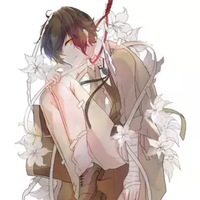
Как развивались ремесла?можно кратко
 0
0
 0
0
Ответы на вопрос
 Внимание! Ответы на вопросы дают живые люди. Они могут содержать ошибочную информацию, заблуждения, а также ответы могут быть сгенерированы нейросетями. Будьте внимательны. Если вы уверены, что ответ неверный, нажмите кнопку "Пожаловаться" под ответом.
Внимание! Ответы на вопросы дают живые люди. Они могут содержать ошибочную информацию, заблуждения, а также ответы могут быть сгенерированы нейросетями. Будьте внимательны. Если вы уверены, что ответ неверный, нажмите кнопку "Пожаловаться" под ответом.

Благодаря хорошим связям между городами, развивалась торговля. С каждым годом становясь по территории все обширней. Широкими темпами шла не только внутренняя торговля, но и внешняя. Водными путями и по суше доставляли купцы разные ткани, изделия и оружие. Все это обменивалось на шелк, хлопок, специи и дорогие камни.
Возрождались промыслы, как рыболовные, шерстяные и другие. Это было благоприятное время для 15 века
 0
0
 0
0

Development of Crafts
The development of crafts has been a significant aspect of human civilization throughout history. Crafts refer to skilled activities that involve creating objects or products by hand. They have played a crucial role in the economic, social, and cultural development of societies.
Crafts in Ancient Times In ancient times, crafts were essential for survival and meeting basic needs. People developed skills in various crafts to create tools, clothing, pottery, and other essential items. These crafts were often passed down through generations, with knowledge and techniques being shared within communities.
Medieval Guild System During the Middle Ages, crafts became more organized through the establishment of guilds. Guilds were associations of craftsmen who regulated the practice of their craft, set standards, and protected the interests of their members. Guilds played a vital role in training apprentices, maintaining quality control, and ensuring fair competition among craftsmen.
Industrial Revolution and Mass Production The Industrial Revolution in the 18th and 19th centuries brought significant changes to the craft industry. The introduction of machinery and factory production led to the mass production of goods, reducing the reliance on individual craftsmen. This shift had both positive and negative impacts on the craft industry. While it increased efficiency and accessibility of goods, it also led to the loss of traditional craftsmanship and the devaluation of handmade products.
Craft Revival and Artisan Movement In recent times, there has been a resurgence of interest in crafts and handmade products. The craft revival movement emphasizes the value of traditional craftsmanship, sustainability, and the uniqueness of handmade items. Artisans and craftsmen are gaining recognition for their skills, and there is a growing market for handmade products.
Contemporary Crafts Today, crafts encompass a wide range of disciplines, including woodworking, metalworking, ceramics, textiles, glassblowing, jewelry making, and many more. Craftspeople often combine traditional techniques with contemporary design to create innovative and artistic pieces. The internet and e-commerce platforms have also provided opportunities for artisans to showcase and sell their products globally.
Conclusion The development of crafts has evolved over time, from being essential for survival to becoming a form of artistic expression and cultural heritage. Crafts continue to play a significant role in society, connecting people to their cultural roots, supporting local economies, and providing unique and meaningful products.
 0
0
 0
0
Похожие вопросы
Топ вопросов за вчера в категории История
Последние заданные вопросы в категории История
-
Математика
-
Литература
-
Алгебра
-
Русский язык
-
Геометрия
-
Английский язык
-
Химия
-
Физика
-
Биология
-
Другие предметы
-
История
-
Обществознание
-
Окружающий мир
-
География
-
Українська мова
-
Информатика
-
Українська література
-
Қазақ тiлi
-
Экономика
-
Музыка
-
Право
-
Беларуская мова
-
Французский язык
-
Немецкий язык
-
МХК
-
ОБЖ
-
Психология
-
Физкультура и спорт
-
Астрономия
-
Кыргыз тили
-
Оʻzbek tili





























